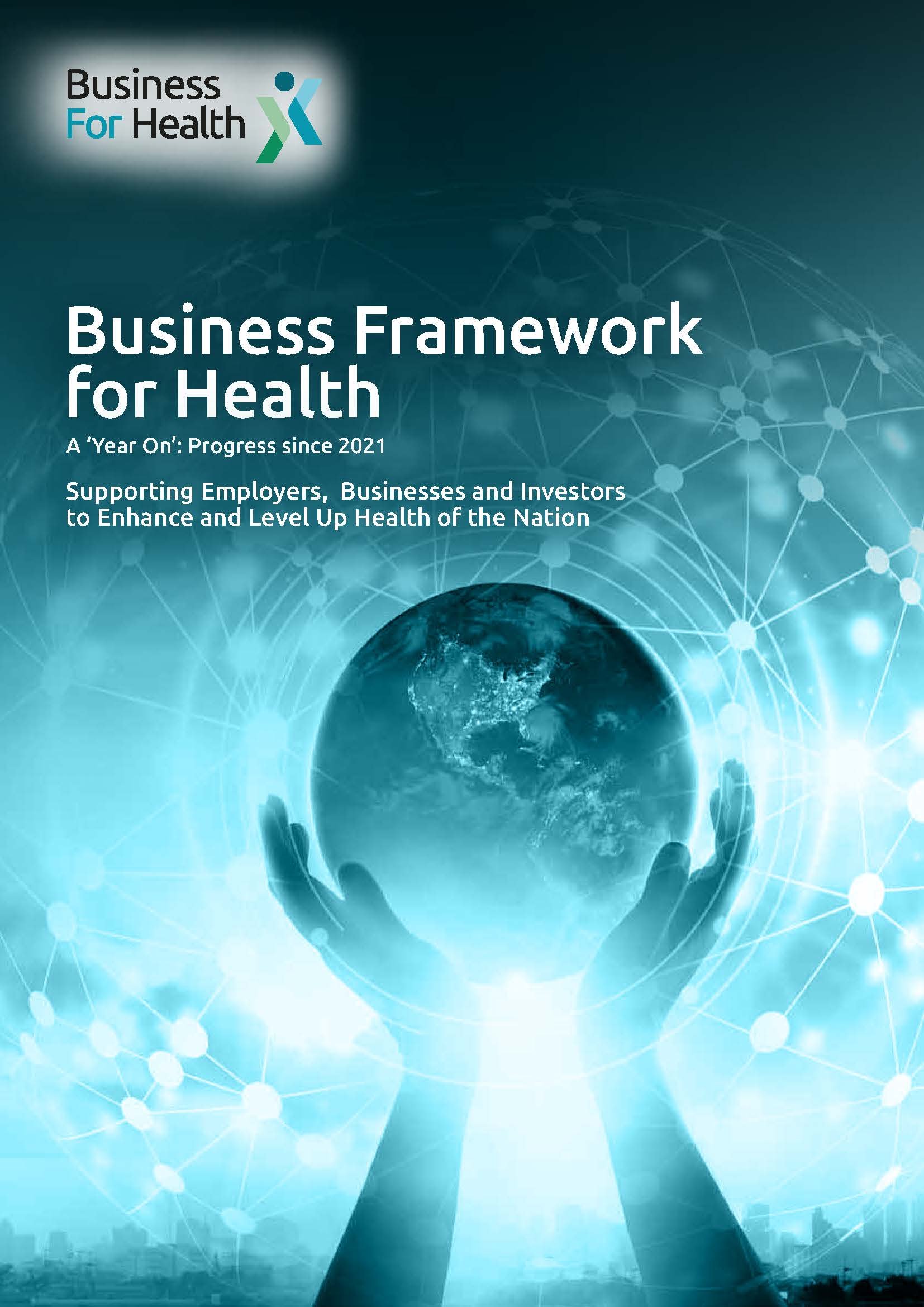
Health into ESG= ESHG Framework for Health
“The Covid-19 pandemic’s economic impact has placed a spotlight on the links between population health and the economy. Once considered the invisible H in ESG reporting, health is now the pivotal piece that underpins all of ESG, and it will play a key role in how companies and shareholders assess where to invest in the years to come. From where we stand, the future of investing is investing in health. ”
Business for Health is aiming to get ‘Health’ into Environmental, Social and Governance (ESG) frameworks - that is, ESHG. Health is where the climate change agenda was 10 years ago, and now is the time to guide more investment and innovation into health guided by ESG mandates like we do for climate change, applying them to healthy life expectancy and societal health.
In April 2023, with the support of Dame Carol Black, we launched the report, Business Framework for Health: A ‘Year On’: Progress since 2021. Supporting Employers, Businesses and Investors to Enhance and Level Up Health of the Nation (which can be accessed here). In this report we set out our routemap for 2023-2025 including a programme of work to bring 'Health' into ESG.
Businesses have direct influence on health through their direct influence on employees’ health as employers, the nature of the products and services they sell, and their external, both direct and indirect, influence on the environments and communities in which they operate and impact.
We are starting to work with the investor community on bringing in "Health' into ESG investing. Increasingly the link between climate and health is becoming better understood and the co-benefits of addressing both together. It is clear that obesity continues to be a major driver of poor health and needs to be put back on the priority list for government attention. As part of this, we will be looking at shaping positive food environments, including specific recommendations in a framework for investors to help them with responsible, smart investing in producers and distributors of food (eg disinvest from ‘bad foods’, invest in ‘good food’ companies and/or persuade ‘bad food’ companies to transition). B4H’s system-shaping approach could examine core metrics that are interoperable across investor and business communities and test them to address ESG with health at the centre.
Addressing health and productivity in the working age population is essential in the short-term. Incentivising businesses and employers as anchor institutions working with evolving integrated care systems in community health is important in the medium-term; B4H aims to facilitate the vital role of business in preventative health through meaningful collaboration with the NHS and care system and a cross-departmental government approach to policy-making. Longer-term preventative health measures form part of an integrated system change approach bringing ‘Health’ into ESG, taking a steer from what has worked successfully in climate to accelerate economic growth.
As witnessed in the climate space, companies - and their shareholders - are coming to recognise that there is an increasing alignment between health outcomes, shareholder or public pressure, and cost of capital. Health data and metrics are improving rapidly and the positive and negative health impacts of companies can, along with climate impacts, be assessed to encompass direct impact (e.g., employee health), secondary impacts (e.g., products and services sold) and contribution to health externalities (e.g., use of product by consumers).
Given the strong environmental influence on health outcomes, ESG framing for investments can also extend to assets which are not primarily health-focused, but which nevertheless have sizeable positive health effects: social housing and later life living being obvious examples which are positive in an ESG framework. Institutional investors should be thinking about the stranded asset risk of things that cause health risks, and businesses should report on health risks like they are doing increasingly on climate issues. Reducing stranded asset risk will minimise shareholder action suits and maximise reputations.

